At a Glance
- Secure Supply Foundations: Reassess purchasing strategies, diversify suppliers, and de-risk critical categories to reduce exposure to supply disruptions.
- Tighten Inventory and Forecasting: Improve planning accuracy and boost inventory turns to maintain responsiveness while reducing holding costs.
- Demand More from Vendors: Shift toward performance-based contracts and greater accountability to improve supplier outcomes and strengthen partnerships.
- Enable Real-Time Visibility: Build dashboards and reporting tools to anticipate issues, manage risk, and maintain control across complex supply networks.
Introduction
This article is the first in our Thrive Through Turbulence series, exploring how businesses can build resilience and adaptability during uncertain times.
Geopolitical instability, inflationary pressure, tariffs, logistics bottlenecks, and supply shortages have all exposed deep vulnerabilities in supply chains. These challenges have shown just how critical supply resilience is to ongoing business success — and why action must be taken now.
One strategic priority to action immediately is to build supply chain strategies that withstand future shocks. For business leaders, this is a chance to move beyond short-term fixes and not just about surviving the next crisis — it’s about creating a supply chain that delivers competitive advantage.
Here are five key actions you can take today to strengthen supply resilience and tighten control.
1. Rethink and Redefine Your Purchasing Strategy
Sourcing strategies that worked yesterday are now liabilities. Legacy purchasing strategies often prioritize price and familiarity over resilience. But a volatile environment, tariffs, rigid contracts, poor category governance, and outdated supplier segmentation expose companies to massive risk. When disruption hits, businesses without a flexible, risk-aware procurement strategy are the first to feel the pain — and the last to recover.
What You Can Do:
- Reassess Strategic Categories: Identify critical inputs and high-risk items, based on new strategic categories which may have changed. Rethink sourcing strategies for these categories with a resilience-first lens.
- Rebuild Governance Models: Tighten approval protocols, clarify procurement roles, and align sourcing decisions with overall business risk appetite.
- Inject Flexibility into Contracts: Include clauses that allow for volume swings, alternative suppliers, or price renegotiation in case of disruption.
What It Unlocks:
You reduce exposure to supplier and category risks, align purchasing with broader business priorities, and gain the flexibility to adapt fast when market conditions change.
Example:
A leading hospital in the US restructured their Purchasing Department and a Strategic Sourcing Director was recruited. This enabled a shift toward value-adding strategic sourcing initiatives, while continuing to manage transactional activities and maintain cost control. Significant savings were achieved, through a focus on utilization issues, and the elimination of bundled “risk sharing” agreements, which, through new analytical insights, was found to not benefit the hospital. Read the case study.
2. Diversify Your Supplier Base and Geographies
You can’t build resilience with all your eggs in one basket. Many businesses rely too heavily on single-source suppliers or limited geographic zones — often without realizing it. While these relationships may seem cost-efficient, they create hidden dependencies that turn into critical vulnerabilities during disruptions. When a port closes or a region locks down, your entire operation grinds to a halt.
What You Can Do:
- Map Current Dependencies: Conduct a risk assessment of suppliers by region, tier, and category. Identify single points of failure across the value chain.
- Qualify Alternatives: Actively develop secondary and tertiary suppliers — ideally across different geographies — even if they aren’t immediately activated.
- Balance Cost and Risk: Don’t over-index on cost savings alone. Factor in risk exposure, lead times, and geopolitical considerations when selecting suppliers.
What It Unlocks:
By spreading your risk across more suppliers and regions, you boost supply continuity, gain leverage in negotiations, and protect operations from localized disruption.
Example:
A global aerospace and defense client faced challenges aligning diverse programs and supplier landscapes through strategic sourcing. By developing a unified implementation roadmap, introducing standardized vendor scorecards, and applying rigorous change management, we enabled the client to consolidate over 40 projects while also expanding and diversifying their supplier base. This reduced dependency on key vendors, improved competitive tension, and enhanced delivery performance, building a more resilient and agile supply chain that continues to set the benchmark in the industry. Read the case study.
3. Improve Forecast Accuracy and Inventory Turns
Poor forecasting starves your business — or drowns it in excess. Without accurate demand planning, businesses either miss sales due to stockouts or tie up cash in warehouses filled with the wrong inventory. In fast-moving, unpredictable markets, traditional forecasting methods fall short. The result? Constant firefighting inflated working capital, and a supply chain that can’t respond fast enough.
What You Can Do:
- Strengthen Demand Planning: Increase accuracy and visibility by improving your systems, processes and reporting to integrate historical data, real-time sales insights, and customer signals into a unified demand forecast.
- Increase S&OP Cadence: Improve your management control systems by moving to shorter cycles to align sales planning and reviews, increasing control and reacting faster to changes.
- Optimise Inventory Policies: Adjust reorder points, safety stocks, and service level targets to reflect current volatility, while aiming to increase inventory turns.
What It Unlocks:
Better forecasts reduce stockouts and excess inventory. Increased inventory turns free up working capital and allow you to respond faster to demand shifts.
Example:
A major agricultural feed company in South-East Asia implemented a Sales and Operations Planning MCS including feed sales forecast input meetings to production planning and a range of reporting tools to track and monitor Key Performance drivers. This led to the improvement in overall coordination and alignment between all departments involved in sales and operations. Forecast Accuracy increased by 38% and feed expiry volume by decreased by 70%. Read the case study.
4. Drive Supplier Performance Through Smart Commercial Levers
If your contracts don’t demand performance, don’t expect any. Many supplier agreements focus on price but ignore outcomes. Without incentives or accountability, suppliers under-deliver — and you’re left holding the bag. Missed deadlines, quality issues, and delivery failures drive up costs and drag down your performance. But the problem isn’t always the supplier. Sometimes it’s the contract.
What You Can Do:
- Introduce Outcome-Based Pricing: Link supplier compensation to measurable KPIs like on-time delivery, quality, or throughput to align incentives.
- Tighten Contract Terms: Clearly define SLAs, escalation processes, and failure penalties. Remove ambiguity that leads to delays or disputes.
- Conduct Regular Reviews: Build structured, data-driven performance reviews into supplier governance to track progress and flag issues early.
What It Unlocks:
By holding vendors accountable for results, you improve quality and reliability without increasing costs — and create a basis for stronger, more collaborative partnerships.
Example:
Renoir assisted a major US hospital with the development of a new contract management system. A monthly contract schedule & action plan was implemented to focus on prioritizing vendor contract negotiation opportunity. A scorecard was implemented and key performance indicators were measured and reviewed weekly against best practice targets. This resulted in an action-oriented culture and savings of millions of dollars. Read the case study.
5. Build Supply Chain Visibility Dashboards
You can’t fix what you can’t see. Disruptions don’t start at the top — they ripple up from deep in the supply chain. But many companies lack the visibility and insights to detect problems early. Fragmented data, siloed systems, and outdated reporting mean leaders are flying blind. By the time an issue is visible, it’s already too late to act without damage.
What You Can Do:
- Define Key Risk Metrics: Identify which metrics matter most (e.g., supplier lead times, order status, inventory aging) and track them consistently.
- Integrate Data Sources: Connect procurement, logistics, production, and supplier data into a centralized dashboard for real-time monitoring.
- Enable Alerts and Interventions: Build triggers that flag delays, shortages, or capacity issues — allowing teams to act before the problem spreads.
- Integrate the dashboards into your regular meetings and challenge staff to find actionable insights to address.
What It Unlocks:
You move from reactive to proactive. Visibility dashboards empower teams to make faster, better decisions — minimizing disruption and improving service reliability.
Example:
A major US global oil and gas company struggled with deploying newly defined ways of working as most work was completed remotely on offshore locations. They were using antiquated tools, meeting structures, manual daily reports and daily objectives, leading to confusion, missed targets and generally a lack of workforce efficiency. Renoir assisted by identifying and consolidating Operations management indicators into a dashboard to allow Maintenance, Security, and Operations functions to better plan and manage their daily activities, thereby reducing losses and improving productivity. The project reduced overdue backlog by 70%, reduced maintenance orders being replanned by 35%, and increased the rate of corrective task lists generated by planners by 212%. Read the case study.
Conclusion: Resilience is the New Efficiency
In a volatile world, resilience is no longer a “nice to have.” It’s a core operational capability — and one that separates the businesses that bend from those that break.
From redefining your purchasing strategy and diversifying suppliers to tightening forecasting and building real-time visibility, the actions outlined here offer a proven path to reduce risk and regain control.
Renoir Consulting has helped organizations around the world build resilient, efficient supply chains that thrive — even in chaos.
Let’s work together to assess your exposure, design tailored interventions and build a supply chain that keeps your business moving forward — no matter what comes next.









